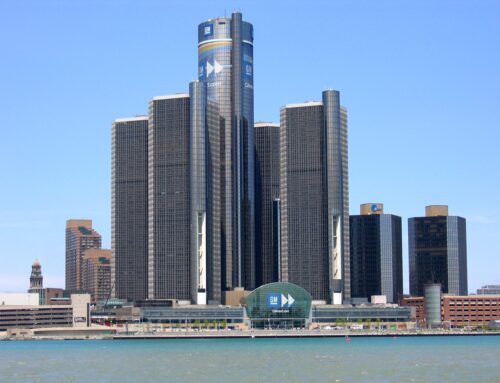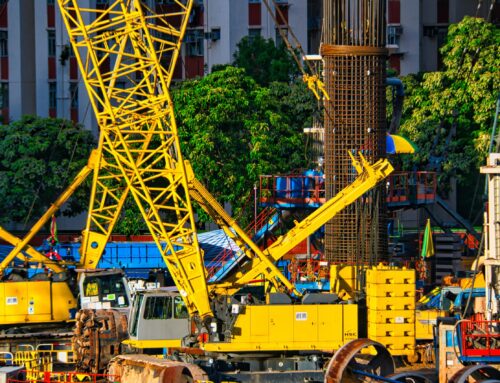Description and Details
The Kinzua Dam was completed in 1965 by the Pittburgh District of the United States Army Corp of Engineers in the hopes to provide flood control and improve the water quality of the Pittsburgh region. The dam is located in Warren County, Pennsylvania and holds the Allegany River resulting in the Allegany reservoir which extends for 27 miles behind the dam with a depth of 120 feet. The dam also produces hydroelectric power. The Kinzua Dam was proposed in response to the catastrophic flooding in Pittsburgh where some floods resulted in water levels 21 feet above the typical flood levels which occurred over the period of a day. Congress passed the Flood Control Act of 1936 which enabled the construction of the Kinzua Dam but wasn’t further explored until 1956 when surveying began for the dam construction.
The Seneca Nation of Indians Allegany Territory is located along the Allegany River and strongly opposed the construction of Kinzua Dam as it would require flooding 10,000 acres of their territory and losing sacred burial grounds. The Army Corps of Engineers defined this land as the “take area” as it fell below 1,365 feet of elevation so most of the area would be flooded or inhabitable. The Seneca people living in this area were forced to relocate and their previous towns were burned. Overall, the Seneca Nation lost nine communities, 10,000 acres of territory, and 600 Seneca people lost their homes.
The Seneca Nation did “fight back” by launching a legal case that was grounded in the Treaty of Canandaigua which was formed in 1794 and affirmed the permanent friendship between the Iroquois Confederacy and the United States. The treaty defined the territory of the Seneca Nation and declared that the U.S. will not disturb the Seneca nation and the Seneca people have the right to free use of the land. The Seneca Nation believed their territory could not be surveyed or surrendered to the Army Corp of Engineers because of the treaty but in 1957 the federal court decided against them in United States vs. 21,250 Acres of Land Etc. which stated the nation had no right from baring federal agents from entering its territory and resisting the taking of its land via eminent domain. The ruling also stated that the treaty cannot rise above the power of Congress to legislate. This further resulted in legal battles that ultimately resulted in the U.S. gaining control of the Kinzua Dam construction. The Seneca Nation pursued another route in 1957 by hiring a civil engineer to explore alternative flood control solutions which resulted in the Conewango-Cattaraugus Plan which proposed a diversion dam near Coldspring, NY to divide the flow of the Allegany river as it was discovered that the Kinzua Dam was not an optimal solution to flooding in the Pittsburgh region. The diverged water would be rerouted into two outlets with one being Lake Erie, and along this path a recreation lake would form. This plan was argued to have advantages to the Kinzua Dam and Lake Erie would having greater storage capacity meaning increased flood protection. This discovery delayed construction of the Kinzua Dam and gained widespread support. The Army Corps of Engineers responded by hiring an engineering firm to evaluate the Kinzua Dam plans and the Seneca Nation’s alternate proposal. The firm concluded the Conewnago-Cattaraugus plan was too expensive but the engineering firm (TAMS) could have been biased in favor of the Corps as it was its biggest client for the firm. The Seneca people did receive settlement funds from the U.S. government to relocate their people.
The Kinzua Dam has protected the Pittsburgh area from flooding and pollution and the Allegany resevoir is protected from filling with sediment as most of the river’s sediments settles 20 miles away from the Kinzua dam in the Seneca Nation territory. Climate change is a cause for concern for the dam as the area has experienced record rainfall resulting in the possibility for flooding to still occur in the Pittsburgh region. This record rainfall also impacts the area upstream of the dam which is experiencing more flooding as well as the result of the growing imperviousness of the river’s floodplain. This is resulting in flooding in communities not accustomed to it and could bring increased pollution to the area from the flood runoff waters.
CEE subjects: Construction Engineering and Management, Environmental Engineering, Hydraulics and Hydrological Engineering, Environmental Policy and Sustainable Infrastructure
Comments: Additional media is available detailing emerging contaminants of concern in the Allegany river due to industrial practices that may be of interest in creating a larger case study for this topic.
Discussion Questions
- While the time period the Kinzua Dam was proposed and built in is very different from today, what can we learn from its pursued construction? Was the Kinzua Dam the right choice?
- The Seneca people proposed an alternative option to the Kinzua Dam construction that was not approved due to the monetary costs despite the option providing increased flooding protection. This is common in engineering projects for some designs to be chosen over others but how can we ensure that all communities are benefitting equally from a project? More importantly, what considerations should be taken into account with a long-term construction project like a dam?
- What biases, if any, were present in the construction of the Kinzua Dam and can biases prevent engineering designs from being the best they can be?
- While the Seneca people and their culture are still alive and thriving compared to other indigenous communities, a huge loss was taken to their culture and their way of the land. How does the loss of indigenous knowledge affect the environment and how can this knowledge be used in engineering principles?
References
- Peer reviewed articles
- Popular media/news references
- The complicated history of the Kinzua Dam and how it changed life for the Seneca people
- The Tragedy Of The Kinzua Dam
- Kinzua Dam & Allegheny Reservoir
- “As long as the grass shall grow” — Johnny Cash
- Books/memoirs
- In the Shadow of Kinzua: The Seneca Nation of Indians since World War II by Laurence M. Hauptman
- The Allegany Senecas and Kinzua Dam: Forced Relocation Through Two Generations by Joy Bilharz
- Lake of Betrayal: The Story of the Kinzua Dam (film)




Leave A Comment